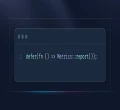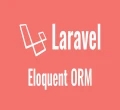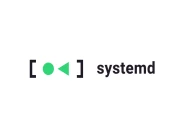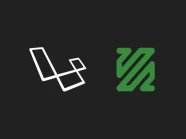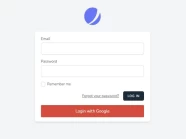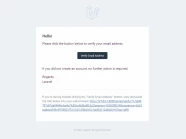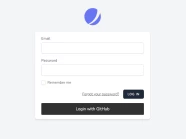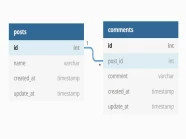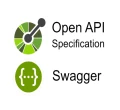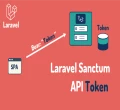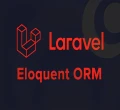
Swagger là gì?
Swagger là một Ngôn ngữ mô tả giao diện để mô tả các API RESTful được thể hiện bằng JSON.
Swagger được sử dụng cùng với một bộ công cụ phần mềm mã nguồn mở để thiết kế, xây dựng, lập tài liệu và sử dụng các dịch vụ web RESTful.
Swagger bao gồm tài liệu tự động, tạo mã (sang nhiều ngôn ngữ lập trình) và tạo test-case.
Cài đặt Laravel
Đầu tiên, chúng ta cần tạo một dự án Laravel mới, sử dụng lệnh sau:
composer create-project --prefer-dist laravel/laravel laravel_swagger
Tiếp theo, chúng ta sẽ kết nối với cơ sở dữ liệu như sau:
DB_CONNECTION=mysql
DB_HOST=127.0.0.1
DB_PORT=3306
DB_DATABASE=laravel_swagger
DB_USERNAME=root
DB_PASSWORD=Cuối cùng, hãy chạy lệnh sau để tạo cấu trúc bảng cơ sở dữ liệu:
php artisan migrate
Cài đặt Swagger trong Laravel
Đầu tiên, chúng ta sẽ cài đặt thư viện darkaonline/l5-swagger bằng lệnh sau:
composer require "darkaonline/l5-swagger"Tiếp theo, chúng ta sẽ publish L5-Swagger's config bằng lệnh command sau:
php artisan vendor:publish --provider "L5Swagger\L5SwaggerServiceProvider"Để cho dự án Laravel có thể tự động cập nhập lại tài liệu, chúng ta cần thêm cấu hình sau vào file .env
L5_SWAGGER_GENERATE_ALWAYS=trueNếu không thêm cấu hình ở trên, mỗi khi bạn thay đổi tài liệu, bạn sẽ cần chạy lệnh sau để cập nhật tài liệu:
php artisan l5-swagger:generateExample Document API
Chúng ta viết tài liệu các API thông qua thư viện swagger-php, vì vậy các bạn cần phải học các cú pháp của thư viện này trước khi thực hiện các ví dụ API bên dưới:
http://zircote.github.io/swagger-php/guide/
Để hiểu rõ hơn nữa, các bạn nên tìm hiểu thêm về OpenAPI, phiên bản mới nhất là 3.0 các bạn hãy nhấp vào URL bên dưới:
https://swagger.io/docs/specification/about/
Thông tin cơ bản API
Đầu tiên bạn mở Controller.php nằm trong thư mục app\Http\Controllers và chỉnh sửa như sau:
<?php
namespace App\Http\Controllers;
use Illuminate\Foundation\Auth\Access\AuthorizesRequests;
use Illuminate\Foundation\Bus\DispatchesJobs;
use Illuminate\Foundation\Validation\ValidatesRequests;
use Illuminate\Routing\Controller as BaseController;
class Controller extends BaseController
{
/**
* @license Apache 2.0
*/
/**
* @OA\Info(
* description="This is a sample Userstore server. You can find out more about Swagger at [http://swagger.io](http://swagger.io) or on [irc.freenode.net, #swagger](http://swagger.io/irc/).",
* version="1.0.0",
* title="Swagger ManhDanBlogs",
* termsOfService="http://swagger.io/terms/",
* @OA\Contact(
* email="[email protected]"
* ),
* @OA\License(
* name="Apache 2.0",
* url="http://www.apache.org/licenses/LICENSE-2.0.html"
* )
* )
* @OA\Server(
* url="http://127.0.0.1:8000/api/",
* description="Development Environment"
* )
*
* @OA\Server(
* url="http://127.0.0.1:9000/api/",
* description="Staging Environment"
* )
* @OA\Tag(
* name="auth",
* description="Operations about auth user",
* @OA\ExternalDocumentation(
* description="Find out more about store",
* url="http://swagger.io"
* )
* )
* @OA\Tag(
* name="user",
* description="Operations about user",
* @OA\ExternalDocumentation(
* description="Find out more about store",
* url="http://swagger.io"
* )
* )
* @OA\Tag(
* name="upload",
* description="Operations about file",
* @OA\ExternalDocumentation(
* description="Find out more about store",
* url="http://swagger.io"
* )
* )
* @OA\ExternalDocumentation(
* description="Find out more about Swagger",
* url="http://swagger.io"
* )
*/
use AuthorizesRequests, DispatchesJobs, ValidatesRequests;
}
CURD Model User
Đầu tiên, bạn hãy mở User.php nằm trong thư mục app\Models và chỉnh sửa như sau:
<?php
namespace App\Models;
use Illuminate\Contracts\Auth\MustVerifyEmail;
use Illuminate\Database\Eloquent\Factories\HasFactory;
use Illuminate\Foundation\Auth\User as Authenticatable;
use Illuminate\Notifications\Notifiable;
use Laravel\Sanctum\HasApiTokens;
class User extends Authenticatable
{
use HasApiTokens, HasFactory, Notifiable;
/** @OA\Schema(
* schema="User",
* required={"id", "name", "email", "password"},
* @OA\Property(
* property="id",
* type="integer",
* format="int32"
* ),
* @OA\Property(
* property="name",
* type="string"
* ),
* @OA\Property(
* property="email",
* type="string"
* ),
* @OA\Property(
* property="email_verified_at",
* type="string",
* format="date-time"
* ),
* @OA\Property(
* property="password",
* type="string"
* ),
* @OA\Property(
* property="created_at",
* type="string",
* format="date-time"
* ),
* @OA\Property(
* property="updated_at",
* type="string",
* format="date-time"
* )
* ),
*/
protected $fillable = [
'name',
'email',
'password',
];
/**
* The attributes that should be hidden for serialization.
*
* @var array<int, string>
*/
protected $hidden = [
'password',
'remember_token',
];
/**
* The attributes that should be cast.
*
* @var array<string, string>
*/
protected $casts = [
'email_verified_at' => 'datetime',
];
}
Tiếp theo, chúng ta sẽ tạo một controller có các chức năng cơ bản như lấy danh sách user, lấy thông tin user, thêm user, sửa user và xóa user. Bạn hãy chạy lệnh command sau:
php artisan make:controller UserController --api
Sau đó bạn hãy mở UserController nằm trong thư mục app\Http\Controllers và chỉnh sửa như sau:
<?php
namespace App\Http\Controllers;
use Illuminate\Http\Request;
use App\Models\User;
use Illuminate\Http\JsonResponse;
use App\Http\Resources\UserResource;
use App\Http\Resources\UserCollection;
use App\Http\Requests\StoreUserRequest;
use App\Http\Requests\UpdateUserRequest;
use Illuminate\Support\Facades\Hash;
class UserController extends Controller
{
/**
* @OA\Get(
* path="/users",
* tags={"user"},
* summary="Get list user",
* description="Returns a single new user.",
* operationId="getListUser",
* @OA\Parameter(
* name="name",
* in="query",
* @OA\Schema(
* type="string"
* )
* ),
* @OA\Response(
* response=200,
* description="successful operation",
* @OA\JsonContent(
* type="object",
* @OA\Property(
* property="data",
* type="array",
* @OA\Items(
* type="object",
* example={
* "id": 1,
* "name": "ManhDan",
* "email": "[email protected]",
* },
* )
* ),
* @OA\Property(
* property="links",
* type="object",
* example={
* "first": "http://127.0.0.1:8000/api/users?page=1",
* "last": "http://127.0.0.1:8000/api/users?page=1",
* "prev": null,
* "next": null,
* },
* ),
* @OA\Property(
* property="meta",
* type="object",
* @OA\Property(
* property="current_page",
* type="integer",
* example=1
* ),
* @OA\Property(
* property="from",
* type="integer",
* example=1
* ),
* @OA\Property(
* property="last_page",
* type="integer",
* example=1
* ),
* @OA\Property(
* property="links",
* type="array",
* @OA\Items(
* type="object",
* example={
* "url": "http://127.0.0.1:8000/api/users?page=1",
* "label": "http://127.0.0.1:8000/api/users?page=1",
* "active": null,
* },
* )
* ),
* @OA\Property(
* property="path",
* type="string",
* example="http://127.0.0.1:8000/api/users"
* ),
* @OA\Property(
* property="per_page",
* type="integer",
* example=10
* ),
* @OA\Property(
* property="to",
* type="integer",
* example=10
* ),
* @OA\Property(
* property="total",
* type="integer",
* example=10
* ),
* ),
* )
* ),
* )
*/
public function index()
{
$users = User::select(['id', 'name', 'email'])->paginate(10);
return new UserCollection($users);
}
/**
* @OA\Post(
* path="/users",
* tags={"user"},
* summary="Add a new user to the store",
* description="Returns a single new user.",
* operationId="createUser",
* @OA\RequestBody(
* description= "User object that needs to be added to the store",
* required=true,
* @OA\JsonContent(
* type="object",
* @OA\Property(property="name", type="string"),
* @OA\Property(property="email", type="string"),
* @OA\Property(property="password", type="string")
* )
* ),
* @OA\Response(
* response=200,
* description="successful operation",
* @OA\JsonContent(ref="#/components/schemas/User"),
* ),
* @OA\Response(
* response=400,
* description="Invalid id supplied",
* @OA\JsonContent(
* type="object",
* @OA\Property(
* property="message",
* type="string",
* example="The specified data is invalid."
* ),
* @OA\Property(
* property="errors",
* type="object",
* example={
* "name": "The name field is required.",
* },
* ),
* ),
* ),
* )
*/
public function store(StoreUserRequest $request)
{
$data = $request->all();
$data['password'] = Hash::make($request->password);
$user = User::create($data);
return new UserResource($user);
}
/**
* @OA\Get(
* path="/users/{userId}",
* tags={"user"},
* summary="Get user by user id",
* operationId="getUserById",
* description="Returns a single user.",
* @OA\Parameter(
* name="userId",
* in="path",
* required=true,
* @OA\Schema(
* type="string"
* )
* ),
* @OA\Response(
* response=200,
* description="successful operation",
* @OA\JsonContent(ref="#/components/schemas/User"),
* ),
* @OA\Response(
* response=404,
* description="User not found",
* @OA\JsonContent(
* type="object",
* @OA\Property(
* property="message",
* type="string",
* example="User not found."
* ),
* ),
* ),
* )
*/
public function show($id)
{
$user = User::where('id', $id)->first();
if ($user) {
return new UserResource($user);
}
return response()->json(['message' => 'User not found.'], JsonResponse::HTTP_NOT_FOUND);
}
/**
* @OA\Put(
* path="/users/{userId}",
* tags={"user"},
* summary="Updated user",
* description="Returns a single user.",
* operationId="updateUser",
* @OA\Parameter(
* name="userId",
* in="path",
* description="User that to be updated",
* required=true,
* @OA\Schema(
* type="string"
* )
* ),
* @OA\RequestBody(
* description= "User object needs to be updated to the store.",
* required=true,
* @OA\JsonContent(
* type="object",
* @OA\Property(property="email", type="string"),
* @OA\Property(property="password", type="string")
* )
* ),
* @OA\Response(
* response=200,
* description="successful operation",
* @OA\JsonContent(
* type="object",
* @OA\Property(property="email", type="string"),
* @OA\Property(property="name", type="string"),
* )
* ),
* @OA\Response(
* response=400,
* description="Invalid id supplied",
* @OA\JsonContent(
* type="object",
* @OA\Property(
* property="message",
* type="string",
* example="The specified data is invalid."
* ),
* @OA\Property(
* property="errors",
* type="object",
* example={
* "name": "The name field is required.",
* },
* ),
* ),
* ),
* @OA\Response(
* response=404,
* description="User not found",
* @OA\JsonContent(
* type="object",
* @OA\Property(
* property="message",
* type="string",
* example="User not found."
* ),
* ),
* )
* )
*/
public function update(UpdateUserRequest $request, $id)
{
$user = User::where('id', $id)->first();
if ($user) {
$user->email = $request->email;
$user->password = $request->password;
$user->save();
return response()->json(['message' => 'Update user successfully.'], JsonResponse::HTTP_OK );
}
return response()->json(['message' => 'User not found.'], JsonResponse::HTTP_NOT_FOUND);
}
/**
* @OA\Delete(
* path="/users/{userId}",
* tags={"user"},
* summary="Delete user",
* description="This can only be done by the logged in user.",
* operationId="deleteUser",
* @OA\Parameter(
* name="userId",
* in="path",
* description="The name that needs to be deleted",
* required=true,
* @OA\Schema(
* type="string"
* )
* ),
* @OA\Response(
* response=200,
* description="successful operation",
* @OA\JsonContent(
* type="object",
* @OA\Property(
* property="message",
* type="string",
* example="Delete user successfully."
* ),
* ),
* ),
* @OA\Response(
* response=404,
* description="User not found",
* @OA\JsonContent(
* type="object",
* @OA\Property(
* property="message",
* type="string",
* example="User not found."
* ),
* ),
* )
* )
*/
public function destroy($id)
{
$user = User::where('id', $id)->first();
if ($user) {
$user->delete();
return response()->json(['message' => 'Delete user successfully.'], JsonResponse::HTTP_OK );
}
return response()->json(['message' => 'User not found.'], JsonResponse::HTTP_NOT_FOUND);
}
}
Authentication
Đầu tiên, chúng ta sẽ tạo một controller có các chức năng cơ bản như đăng nhập và lấy thông tin user đang đăng nhập. Bạn hãy chạy lệnh command sau:
php artisan make:controller AuthController
Sau đó bạn hãy mở AuthController.php nằm trong thư mục app\Http\Controllers và chỉnh sửa như sau:
<?php
namespace App\Http\Controllers;
use Illuminate\Http\Request;
use App\Models\User;
use Illuminate\Support\Facades\Auth;
use App\Http\Requests\LoginAuthRequest;
use App\Http\Resources\UserResource;
class AuthController extends Controller
{
/**
* @OA\Post(
* path="/login",
* tags={"auth"},
* summary="Logs user into system",
* description="Returns a info auth.",
* operationId="loginUser",
* @OA\Parameter(
* name="email",
* in="query",
* description="The user name for login",
* @OA\Schema(
* type="string"
* )
* ),
* @OA\Parameter(
* name="password",
* in="query",
* @OA\Schema(
* type="string",
* )
* ),
* @OA\Response(
* response=200,
* description="successful operation",
* @OA\JsonContent(
* type="object",
* @OA\Property(
* property="data",
* type="object",
* example={
* "access_token": "5|Fh33EyADXaSYGIZM518zxBBQXL2aT7jOV9xyXTpJ",
* "token_type": "Bearer",
* },
* ),
* ),
* ),
* @OA\Response(
* response=400,
* description="Invalid id supplied",
* @OA\JsonContent(
* type="object",
* @OA\Property(
* property="message",
* type="string",
* example="The specified data is invalid."
* ),
* @OA\Property(
* property="errors",
* type="object",
* example={
* "email": "The email field is required.",
* },
* ),
* ),
* ),
* @OA\Response(
* response=401,
* description="Unauthorized",
* @OA\JsonContent(
* type="object",
* @OA\Property(
* property="message",
* type="string",
* example="Unauthenticated."
* ),
* ),
* )
* )
*/
public function login(LoginAuthRequest $request)
{
if (!Auth::attempt($request->only('email', 'password'))) {
return response()->json(['message' => 'Unauthenticated.'], 401);
}
$user = User::where('email', $request['email'])->firstOrFail();
$token = $user->createToken('auth_token')->plainTextToken;
$result['data'] = [
'access_token' => $token,
'token_type' => 'Bearer',
];
return response()->json($result);
}
/**
* @OA\Get(
* path="/me",
* tags={"auth"},
* summary="Get user by user id",
* operationId="getUserLogined",
* description="Returns a single user.",
* security={ {"sanctum": {}, "basic_authentication": {} }},
* @OA\Response(
* response=200,
* description="successful operation",
* @OA\JsonContent(ref="#/components/schemas/User"),
* ),
* @OA\Response(
* response=401,
* description="Unauthorized",
* @OA\JsonContent(
* type="object",
* @OA\Property(
* property="message",
* type="string",
* example="Unauthenticated."
* ),
* ),
* ),
* )
*/
public function me(Request $request)
{
$user = $request->user();
return new UserResource($user);
}
}
Cuối cùng, bạn hãy mở l5-swagger.php nằm trong thư mục config và chỉnh sửa như sau:
...
'securitySchemes' => [
...
'sanctum' => [
'type' => 'http',
'description' => 'Laravel Sanctum token authentication',
'scheme' => 'bearer',
'bearerFormat' => 'JWT'
],
...
],
...Nếu bạn có sử dụng Basic Authentication, bạn hãy mở l5-swagger.php nằm trong thư mục config và chỉnh sửa như sau:
...
'securitySchemes' => [
...
'basic_authentication' => [
'type' => 'http',
'description' => 'Basic Authentication is a method for an HTTP user agent (e.g., a web browser) to provide a username and password when making a request.',
'scheme' => 'basic',
],
...
],
...Upload File
Đầu tiên, chúng ta sẽ tạo một controller có các chức năng cơ bản như upload one file và upload multiple file. Bạn hãy chạy lệnh command sau:
php artisan make:controller UploadController
Sau đó bạn hãy mở UploadController.php nằm trong thư mục app\Http\Controllers và chỉnh sửa như sau:
<?php
namespace App\Http\Controllers;
use Illuminate\Http\Request;
use Illuminate\Http\Exceptions\HttpResponseException;
use Illuminate\Http\JsonResponse;
class UploadController extends Controller
{
/**
* @OA\Post(
* path="/upload/file",
* tags={"upload"},
* summary="Upload files to the system.",
* operationId="uploadFile",
* description="Return path file on the system.",
* @OA\RequestBody(
* required=true,
* @OA\MediaType(
* mediaType="multipart/form-data",
* @OA\Schema(
* @OA\Property(property="file", type="string", format="binary"),
* )
* )
* ),
* @OA\Response(
* response=200,
* description="successful operation",
* @OA\JsonContent(ref="#/components/schemas/User"),
* ),
* @OA\Response(
* response=404,
* description="User not found",
* @OA\JsonContent(
* type="object",
* @OA\Property(
* property="message",
* type="string",
* example="User not found."
* ),
* ),
* ),
* )
*/
public function index(Request $request)
{
try {
$name = $this->setNameFile($request->file->extension());
$path = $request->file->storeAs('files', $name, 'public');
return new JsonResponse(['path' => '/' . $path], 200);
} catch (\Throwable $th) {
report($th);
throw new HttpResponseException(
response()->json([
'message' => 'The given data was invalid.',
'errors' => [
'file' => $th->getMessage(),
]
], JsonResponse::HTTP_UNPROCESSABLE_ENTITY)
);
}
}
/**
* @OA\Post(
* path="/upload/multiple-file",
* tags={"upload"},
* summary="Upload files to the system.",
* operationId="uploadMultipleFile",
* description="Return path file on the system.",
* @OA\RequestBody(
* @OA\MediaType(
* mediaType="multipart/form-data",
* @OA\Schema(
* type="object",
* @OA\Property(
* property="files[]",
* type="array",
* @OA\Items(type="string", format="binary")
* )
* )
* )
* ),
* @OA\Response(
* response=200,
* description="successful operation",
* @OA\JsonContent(ref="#/components/schemas/User"),
* ),
* @OA\Response(
* response=404,
* description="User not found",
* @OA\JsonContent(
* type="object",
* @OA\Property(
* property="message",
* type="string",
* example="User not found."
* ),
* ),
* ),
* )
*/
public function multiple(Request $request)
{
try {
$result = [];
foreach ($request->file('files') as $key => $file) {
$name = $this->setNameFile($file->extension());
$path = $file->storeAs('files', $name, 'public');
array_push($result, '/' . $path);
}
return new JsonResponse($result, 200);
} catch (\Throwable $th) {
report($th);
throw new HttpResponseException(
response()->json([
'message' => 'The given data was invalid.',
'errors' => [
'file' => $th->getMessage(),
]
], JsonResponse::HTTP_UNPROCESSABLE_ENTITY)
);
}
}
/**
* Create new name file.
*
* @param \Illuminate\Http\Request $request
* @param string $response
* @return \Illuminate\Http\RedirectResponse|\Illuminate\Http\JsonResponse
*/
protected function setNameFile($extension)
{
$time = time();
$str_rand = \Str::random(12);
return "{$str_rand}_{$time}.{$extension}";
}
}
Trải nghiệm Swagger Laravel
Các bạn hãy truy cập vào URL sau để trải nghiệm Swggwer trong Laravel nào.
http://127.0.0.1:8000/api/documentation

Như vậy, mình đã hướng dẫn các bạn cách cài đặt swagger trong dự án Laravel, mình hy vọng bài viết này sẽ giúp ích cho công việc và quá trình học tập của bạn. Nếu bạn có bất kỳ câu hỏi nào hãy liên hệ với chúng tôi qua trang contact. Cảm ơn bạn.

